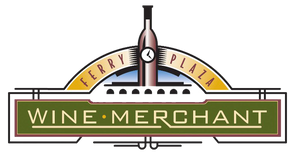Description
Podere Brizio was established in 1996 by Roberto Bellini when he sold most of his stake in the Pieve di Santa Restituta property to Angelo Gaja. Bellini, who managed Pieve di Santa Restituta since the 1970s, claims to have retained the finest parcels for himself in order to create Brizio. In 2001 Bellini completely renovated the old cellars; success notwithstanding, in 2013 Bellini decided to sell the estate to Alejandro Bulgheroni, owner of the Dievole winery in Chianti Classico. Bulgheroni decided to revamp and renovate the estate, focusing entirely on Sangiovese under the watchful eye of Alberto Antonini, Italy’s most lauded oenologist. Note that Bulgheroni also owns fine wineries in Napa, Uruguay, Australia and his native Argentina. Located southwest of the town of Montalcino in rolling hills of 100-million-year-old rocky marl and limestone covered by marine sand and loam, Podere Brizio is a true gem of an estate. Farming is certified organic, and now is fully biodynamic as well. The vineyards are planted exclusively to Sangiovese Grosso, cultivated through massal selection from some of Montalcino’s best estates. Only 11 of the estate’s 33 hectares are under vine, with the remainder in olive groves, scree, garrigue and untamed fallow land that mimics the nature preserve that borders the estate. The winery is surrounded by some of Montalcino’s best properties: Castello Romitorio, Maté and Ciacci Piccolomini, to name a few.
100% Sangiovese. Completely hand-picked, harvest took place over several weeks and multiple passes through the vineyards, grape selection was made both in the fields and at the cellar door to ensure optimum potential. The grapes underwent spontaneous fermentation with indigenous yeast, at cool temperatures, in stainless-steel tanks. The must saw an extended maceration and regular pump-overs, before being racked into 5,400L French oak casks, from noted cooper Gamba. The thick staves and tight grain of the wood require zero toasting, resulting in wines that are, according to Antonini, “authentic without being rustic, fleshy without being fat”. Classic aromas of dried red berries, dusty earth and savory herbs. The medium-bodied palate is dry and elegantly structured; spicy, with flavors of fresh cranberry, sour cherry and red plum.
Silky with nicely rounded tannins and a pleasant, tart finish. The coin on the label is the Parpagliola—minted in 1556—that Bellini bought at auction in the 1970s. It shows the she-wolf suckling Romulus and Remus (a symbol of both Rome and Siena) with the writing "The Republic of Siena in Monte Ilicino." The name of the city we now know as Montalcino derives from the Italian for Mountain of the Ilex, or holly tree.








